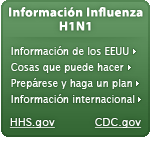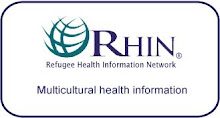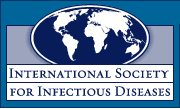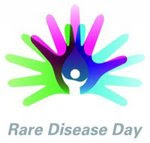http://www.cdc.gov/TeenPregnancy/PDF/TP-Rates_11-2012.pdf
CDC’s Division of Reproductive Health is pleased to announce new updates to our Teen Pregnancy Prevention Web site:
- 2011 teen birth data is now available on the About Teen Pregnancy Web page.
- A new slide set, Teen Pregnancy Rates by Outcome, Race, and Hispanic Ethnicity 2000–2011 [PDF-396KB], is also available to view and download on the right side of the About Teen Pregnancy page.
Learn more about—
About Teen Pregnancy
On this Page
- Teen Pregnancy in the United States
- Disparities in Teen Birth Rates
- The Importance of Prevention
- CDC Priority: Reducing Teen Pregnancy and Promoting Health Equity Among Youth
- Resources
Teen Pregnancy in the United States
In 2011, a total of 329,797 babies were born to women aged 15–19 years, for a live birth rate of 31.3 per 1,000 women in this age group.1 This is a record low for U.S. teens in this age group, and a drop of 8% from 2010. Birth rates fell 11% for women aged 15–17 years, and 7% for women aged 18–19 years. While reasons for the declines are not clear, teens seem to be less sexually active, and more of those who are sexually active seem to be using birth control than in previous years.2
Source: Hamilton BE, Martin JA, Ventura SJ. Births: Preliminary data for 2010. National Vital Statistics Reports. 2011;60(2):Table S-2.
*Hamilton BE, Martin JA, Ventura SJ. Births: Preliminary data for 2011. National Vital Statistics Reports. 2012;61(5). Table 2.
Disparities in Teen Birth Rates
Teen birth rates declined for all races and for Hispanics except for 18–19 year old Asian/Pacific Islanders, for whom rates did not change. The decline was greatest for Hispanic teens, with a drop of 11% from 2010. Despite these declines, substantial disparities persist in teen birth rates, and teen pregnancy and childbearing continue to carry significant social and economic costs. The U.S. teen pregnancy, birth, sexually transmitted disease (STD), and abortion rates are substantially higher than those of other western industrialized nations.3
The Importance of Prevention
Teen pregnancy and childbearing bring substantial social and economic costs through immediate and long-term impacts on teen parents and their children.
- In 2008, teen pregnancy and childbirth accounted for nearly $11 billion per year in costs to U.S. taxpayers for increased health care and foster care, increased incarceration rates among children of teen parents, and lost tax revenue because of lower educational attainment and income among teen mothers.4
- Pregnancy and birth are significant contributors to high school drop out rates among girls. Only about 50% of teen mothers receive a high school diploma by 22 years of age, versus approximately 90% of women who had not given birth during adolescence.5
- The children of teenage mothers are more likely to have lower school achievement and drop out of high school, have more health problems, be incarcerated at some time during adolescence, give birth as a teenager, and face unemployment as a young adult.6
These effects remain for the teen mother and her child even after adjusting for those factors that increased the teenager’s risk for pregnancy, such as growing up in poverty, having parents with low levels of education, growing up in a single-parent family, and having poor performance in school. 3
CDC Priority: Reducing Teen Pregnancy and Promoting Health Equity Among Youth
Teen pregnancy prevention is one of CDC’s top six priorities, a “winnable battle” in public health, and of paramount importance to health and quality of life for our youth. Evidence-based teen pregnancy prevention programs typically address specific protective factors on the basis of knowledge, skills, beliefs, or attitudes related to teen pregnancy.
- Knowledge of sexual issues, HIV, other STDs, and pregnancy (including methods of prevention).
- Perception of HIV risk.
- Personal values about sex and abstinence.
- Attitudes toward condoms (pro and con).
- Perception of peer norms and behavior about sex.
- Individual ability to refuse sex and to use condoms.
- Intent to abstain from sex or limit number of partners.
- Communication with parents or other adults about sex, condoms, and contraception.
- Individual ability to avoid HIV/STD risk and risk behaviors.
- Avoidance of places and situations that might lead to sex.
- Intent to use a condom.7
In addition to evidence-based prevention programs, teens need access to youth-friendly clinical services. Parents and other trusted adults also play an important role in helping teens make healthy choices about relationships, sex, and birth control. Learn about what CDC and other federal agencies are doing to reduce teen pregnancy.
Resources
1 Hamilton BE, Martin JA, Ventura SJ. Births: Preliminary data for 2011. National Vital Statistics Reports. 2012;61(5). Table 2.
2 Martinez G, Copen CE, Abma JC. Teenagers in the United States: Sexual activity, contraceptive use, and childbearing, 2006–2010. National Survey of Family Growth. National Center for Health Statistics. National Vital Health Stat. 2011;23(31).
3 Singh S, Darroch JE. Adolescent pregnancy and childbearing: levels and trends in developed countries. Fam Plann Perspect. 2000;32(1):14-23.
4 National Campaign to Prevent Teen and Unplanned Pregnancy, Counting It Up: The Public Costs of Teen Childbearing
5 Perper K, Peterson K, Manlove J. Diploma Attainment Among Teen Mothers. Child Trends, Fact Sheet Publication #2010-01: Washington, DC: Child Trends; 2010.
6 Hoffman SD. Kids Having Kids: Economic Costs and Social Consequences of Teen Pregnancy. Washington, DC: The Urban Institute Press; 2008.
7 Kirby D, Laris BA, Rolleri L. The Impact of Sex and HIV Education Programs in Schools and Communities on Sexual Behaviors Among Young Adults. Scotts Valley, CA: ETR Associates; 2006.


































No hay comentarios:
Publicar un comentario